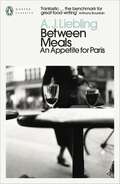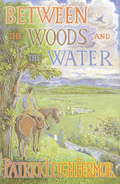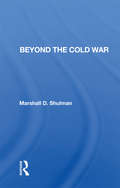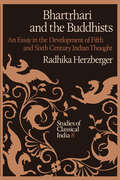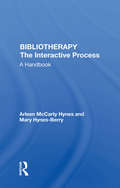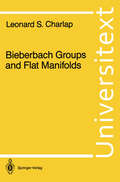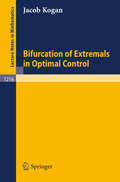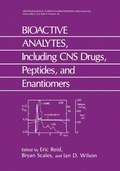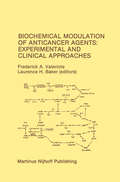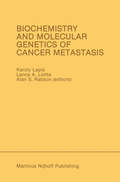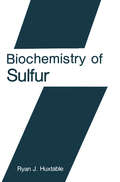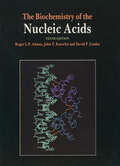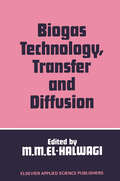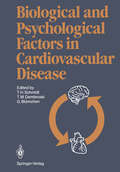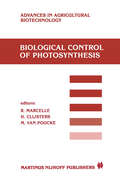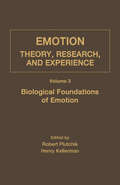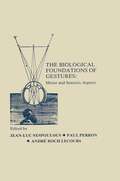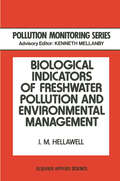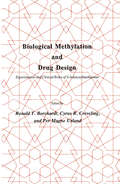- Table View
- List View
Between Meals: An Appetite for Paris
by A. J. Liebling'Fantastic. The benchmark for great food writing' Anthony Bourdain'The primary requisite for writing well about food is a good appetite'Between Meals is the gourmand and journalist A.J. Liebling's delectable account of his time spent eating and drinking in 1920s Paris, under the tutelage of his friend Yves Mirande, 'one of the last of the great around-the-clock gastronomes of France'. With gluttonous joie de vivre, he fondly recalls everything from glorious dining ('A leg of lamb larded with anchovies, artichokes on a pedestal of foie gras, and four or five kinds of cheese') to bad rosé ('a pinkish cross between No-Cal and vinegar'), and an ill-fated sojourn at a Swiss slimming-clinic. Witty, tart and full of gusto, this is a love song to food, wine and Paris.'Liebling transfers excitement, warmth, wit and information ... as hearty and explicit as good Calvados' The New York Times Book ReviewWith an introduction by James Salter
Between the Woods and the Water: On Foot to Constantinople from the Hook of Holland: The Middle Danube to the Iron Gates (John Murray Travel Classics Ser.)
by Patrick Leigh FermorThe acclaimed travel writer's youthful journey - as an 18-year-old - across 1930s Europe by foot began in A Time of Gifts, which covered the author's exacting journey from the Lowlands as far as Hungary. Picking up from the very spot on a bridge across the Danube where his readers last saw him, we travel on with him across the great Hungarian Plain on horseback, and over the Romanian border to Transylvania.The trip was an exploration of a continent which was already showing signs of the holocaust which was to come. Although frequently praised for his lyrical writing, Fermor's account also provides a coherent understanding of the dramatic events then unfolding in Middle Europe. But the delight remains in travelling with him in his picaresque journey past remote castles, mountain villages, monasteries and towering ranges.
Beyond The Cold War
by Marshall D. ShulmanThis book contributes to the public discussion of Soviet foreign policy issues by making available some of the information and insights which have resulted from the work of many scholars in this field. It explores how diverse trends in the evolution of the policy affected the nature of the Cold War.
Beyond The Cold War
by Marshall D. ShulmanThis book contributes to the public discussion of Soviet foreign policy issues by making available some of the information and insights which have resulted from the work of many scholars in this field. It explores how diverse trends in the evolution of the policy affected the nature of the Cold War.
Bhartṛhari and the Buddhists: An Essay in the Development of Fifth and Sixth Century Indian Thought (Studies of Classical India #8)
by Radhika HerzbergerThe Viikyapadiya of Bhartrhari and the Pramii1Jasamuccaya of Dignaga • are seminal texts in the history of ancient Indian philosophy. One text deals with grammar, the other with logic, both are the work of committed metaphysicians. Written within a span of less than a hundred years, between the fifth and the sixth centuries A.D., these texts have generally been treated separately, as representing independent schools of thought. This essay attempts to interpret these texts jointly, as a dialogue between a grammarian and a logician. This way of approaching these texts highlights unexpected facets of Bhartrhari's and Dignaga's theories of language and is intended to identify the individual achievements of each. Above all, this treatment is an exercise in writing the intellectual history of a period in time, rather than a history of a school of philosophy. The prevailing view of Bhartrhari holds that his linguistic techniques are not intrinsic to his metaphysics. The conclusions reached in the present essay are that Bhartrhari's metaphysics underlie his linguistic techniques and articulate their presuppositions. The prevailing view of Dignaga maintains that for him language deals with illusory entities and must falsify what is real. The conclusions reached in the present essay are that Dignaga's logical rules are designed to ensure that in using language one is not committed to a belief in fictional entities. My debt to modern scholarship in the field is considerable.
Bibliotherapy: The Interactive Process A Handbook
by Arleen McCarty HynesThe recognition that literature can be a healing tool is as old as Aristotle's discussion of catharsis. In bibliotherapy an individual reads or listens to a work of literature specifically for its therapeutic value. But until now a real professional tool was lacking. This handbook, the first of its kind, is designed to teach both professionals and laypersons how to use the whole spectrum of literature—from poetry to science fiction—to promote greater self-knowledge, to renew the spirit, and, in general, to aid in the healing process. Beginning with an explanation of the theoretical basis for bibliotherapy, the authors then provide a comprehensive overview of the procedures and goals of the discipline. The material is presented in such a way that the process may be adapted to the particular educational or psychological approach favored by the practitioner for the therapeutic treatment of individuals who have been abused or are chemically dependent, physically disabled, emotionally disturbed, hospitalized, in correctional institutions, or simply facing difficult or stressful life situations. The authors also offer insights for using bibliotherapy to promote the healthy growth and development of children and to provide psychological help and guidance to adults and the aging. Case studies from practice and training experiences illustrate the principles of bibliotherapy; in addition, the authors include end-of-chapter study questions for persons involved in therapy and self-help and practicum guides for professionals. Taken together, these materials comprise a unique and invaluable reference work in a new and significant field.
Bibliotherapy: The Interactive Process A Handbook
by Arleen McCarty HynesThe recognition that literature can be a healing tool is as old as Aristotle's discussion of catharsis. In bibliotherapy an individual reads or listens to a work of literature specifically for its therapeutic value. But until now a real professional tool was lacking. This handbook, the first of its kind, is designed to teach both professionals and laypersons how to use the whole spectrum of literature—from poetry to science fiction—to promote greater self-knowledge, to renew the spirit, and, in general, to aid in the healing process. Beginning with an explanation of the theoretical basis for bibliotherapy, the authors then provide a comprehensive overview of the procedures and goals of the discipline. The material is presented in such a way that the process may be adapted to the particular educational or psychological approach favored by the practitioner for the therapeutic treatment of individuals who have been abused or are chemically dependent, physically disabled, emotionally disturbed, hospitalized, in correctional institutions, or simply facing difficult or stressful life situations. The authors also offer insights for using bibliotherapy to promote the healthy growth and development of children and to provide psychological help and guidance to adults and the aging. Case studies from practice and training experiences illustrate the principles of bibliotherapy; in addition, the authors include end-of-chapter study questions for persons involved in therapy and self-help and practicum guides for professionals. Taken together, these materials comprise a unique and invaluable reference work in a new and significant field.
Bieberbach Groups and Flat Manifolds (Universitext)
by Leonard S. CharlapMany mathematics books suffer from schizophrenia, and this is yet another. On the one hand it tries to be a reference for the basic results on flat riemannian manifolds. On the other hand it attempts to be a textbook which can be used for a second year graduate course. My aim was to keep the second personality dominant, but the reference persona kept breaking out especially at the end of sections in the form of remarks that contain more advanced material. To satisfy this reference persona, I'll begin by telling you a little about the subject matter of the book, and then I'll talk about the textbook aspect. A flat riemannian manifold is a space in which you can talk about geometry (e. g. distance, angle, curvature, "straight lines," etc. ) and, in addition, the geometry is locally the one we all know and love, namely euclidean geometry. This means that near any point of this space one can introduce coordinates so that with respect to these coordinates, the rules of euclidean geometry hold. These coordinates are not valid in the entire space, so you can't conclude the space is euclidean space itself. In this book we are mainly concerned with compact flat riemannian manifolds, and unless we say otherwise, we use the term "flat manifold" to mean "compact flat riemannian manifold. " It turns out that the most important invariant for flat manifolds is the fundamental group.
Bilingualism in Education: Aspects of theory, research and practice
by Jim Cummins Merrill SwainThis is a remarkably interesting and useful book...it makes a significant contribution to our knowledge and understanding of both bilingualism and education.'Journal of Education Policy
Bilingualism in Education: Aspects of theory, research and practice
by Jim Cummins Merrill SwainThis is a remarkably interesting and useful book...it makes a significant contribution to our knowledge and understanding of both bilingualism and education.'Journal of Education Policy
BIOACTIVE ANALYTES, Including CNS Drugs, Peptides, and Enantiomers: (pdf) (Methodological Surveys in Biochemistry and Analysis #16 A)
by E. Reid Bryan Scales I. D. WilsonBiochemical Modulation of Anticancer Agents: Proceedings of the 18th Annual Detroit Cancer Symposium Detroit, Michigan, USA — June 13–14, 1986 (Developments in Oncology #47)
by Laurence H. Baker Frederick A. ValerioteBiochemical Modulation at the present time defines an area of study in which the intracellular metabolism of a given anti cancer agent is modulated (usually by a noncytotoxic agent or a cytotoxic agent at sufficiently low dosage to make it non cytotoxic) in order to either increase the effectiveness of the particular agent against tumor cells or decrease its cytotox icity against normal cells. The major focus of modulation has been the agents 5-fluorouracil (FUra), arabinofuranosylcytosine (ara-C), methotrexate (MTX) and a few alkylating agents. The major thrust of the studies has been to increase the flow of the anticancer agent along the pathway responsible for the formation of the cytotoxic species: for example, FUra to FUTP or ara-C to ara-CTP. While in most cases the application of research re sults to clinical trials does not require the subsequent exper tise of the laboratory researchers, application of biochemical modulatory schemes to clinical protocols necessitate a dramatic break with the past procedures. As shown in the laboratory clinical loop below, close collaboration between the laboratory and clinical investigator is essential. While the laboratory REDEFINE TECHNOLOGY, TESTS OR QUESTIONS FOR FURTHER THERAPEUTIC ADVANCE CLINICAL EXPERIMENTAL PROTOCOL (LABORATORY) RESEARCH STUDIES DEFINE AND TEST APPROPRIATE SCIENTIFIC PARAMETERS results define rationally-based regimens, it is essential that the clinical protocols contain the requirement that clinical material (either tumor or normal tissues) be sampled to deter mine whether the biochemical modulation being proposed is in fact beinq accomplished.
Biochemistry and Molecular Genetics of Cancer Metastasis: Proceedings of the Symposium on Biochemistry and Molecular Genetics of Cancer Metastasis Bethesda, Maryland — March 18–20, 1985 (Developments in Oncology #41)
by Alan S. Rabson Lance A. Liotta KarolyLapisThe success rate for treatment of primary neoplasms has improved sig nificantly due to improved surgical, radiotherapy, and chemotherapy methods, and by supportive patient care. In contrast, the treatment of cancer metastases, the cause of most cancer deaths, has not been very successful. Approximately 50% or more of patients with primary malignant neoplasms already have established metastases. Consequently, the most important problem in cancer treatment is the destruction or prevention of metastases. Metastases research has obvious clinical importance. Yet it has only been recently that investigators have attempted to study the mechanisms in volved in this process. This is in part due to the complexity of metastases formation. A metastatic colony is the result of a complicated series of steps involving mUltiple tumor host interactions. It is expected that multiple biochemical factors and gene products derived both from the host and the tumor cell may be required for the metastasizing tumor cell to invade, survive host defenses, travel in the circulation, arrest and adhere in the target organ, invade out, and grow as a metastatic colony. Some of these factors have recently been identified by investigators who have focused on individual steps in the metastatic process and have employed new technologies in immunology, biochemistry and molecular biology. The purpose of this volume is to capture some of the excitement in the field of metastases based on such new discoveries.
Biochemistry of Sulfur (Biochemistry of the Elements #6)
by Ryan J. HuxtableThere can be few elements with a biochemistry as coherent as that of sulfur. This important element is crucial to myriad aspects of metabo lism, catalysis, and structure. The plurality of functions in which sulfur is involved derives squarely from the numerous oxidation states in which it may exist, some having great stability, some being capable of ready redox interconversions, and yet others having great instability. As a result, the flux of sulfur from the geosphere through the various kingdoms of life leaves few biochemical processes unaffected. Although there are large gaps in the fabric of our basic knowledge of sulfur biochemistry, it is sufficiently framed to allow a unified and organized story, a story which many of the best-known names in bio chemistry have helped to write. It has been both a task and a privilege to try and summarize this story, one that is enormous, complex, fast moving, still developing and, above all, exciting. I suppose that no mo nographer of such a vast subject could be satisfied with his efforts. It is unfortunately probable that in attempting this task I have made as many errors as a Stilton cheese has blue streaks, and as many omissions as a Swiss cheese has holes. Perfection is not to be achieved in a monograph. Inasmuch as I have succeeded, the credit belongs to those whose efforts gave us the knowledge we have. Where I have failed, the fault is only mine.
The Biochemistry of the Nucleic Acids
by R. L. AdamsWhen the first edition of this book was published in 1950, it set out to present an elementary outline of the state of knowledge of nucleic acid biochemistry at that time and it was the first monograph on the subject to appear since Levene's book on Nucleic Acids in 1931. The fact that a tenth edition is required after thirty five years and that virtually nothing of the original book has been retained is some measure of the speed with which knowledge has advanced in this field. As a result of this vast increase in information it becomes increasingly difficult to fulfil the aims of providing an introduction to nucleic acid biochemistry and satisfying the requirements of advanced undergraduates and postgraduates in biochemistry, genetics and molecular biology. We have attempted to achieve these aims by con centrating on those basic aspects not normally covered in the general biochemistry textbooks and by providing copious references so that details of methodology can readily be retrieved by those requiring further information. The first seven editions emerged from the pen of J. N. Davidson who died in September 1972 shortly after completing the seventh edition. The subsequent editions have been produced by various colleagues who have tried to retain something of the character and structure of the earlier editions while at the same time introducing new ideas and concepts and eliminating some of the more out -dated material.
Biogas Technology, Transfer and Diffusion
by M. M.El-HalwagiThe International Conference on the State of the Art on Biogas Technology, Transfer and Diffusion was held in Cairo, Egypt, from 17 to 24 November 1984. The Conference was organized by the Egyptian Academy of Scientific Research and Technology (ASR T), the Egyptian National Research Centre (NRC), the Bioenergy Systems and Technology project (BST) of the US Agency for International Development (US/AID) Office of Energy, and the National Academy of Sciences (NAS). A number of international organizations and agencies co-sponsored the Conference. More than 100 participants from 40 countries attended. The purpose of the Conference was to assess the viability of biogas technology (BGT) and propose future courses of action for exploiting BGT prospects to the fullest extent. The Conference emphasized a balanced coverage of technical, environ mental, social, economic and organizational aspects relevant to biogas systems design, operation and diffusion. It was organized to incorporate experiences that are pertinent, for the most part, to developing countries. In addition to the wide spectrum of presentations and country programs, structured and non-structured discussions among the participants were strongly encouraged in thematic sessions at round-table discussions, and through personal contacts during poster sessions and field trips. It was clear from the enthusiastic response of most participants that the Conference, in large measure, succeeded in fulfilling its mission. Although draft papers were distributed to all participants, it was felt that the results obtained were worthy of organized and refined documentation. And this is precisely what this book intends to do.
Biological and Psychological Factors in Cardiovascular Disease
by GerhardBlümchen Theodore M.Dembroski Thomas H. SchmidtAn opening address should ask the right questions, which we expect to answer during the coming years. A good opening address should formu late hypotheses for falsification during the conference or in the near fu ture. Mter Dr. Groen's excellent lecture yesterday, I feel better about my task, because I feel I am not alone in asking the ten questions in my ab stract. It is an honor for me to give this short paper largely based on my expe riences during 15 years as medical director of a rehabilitation center in Ba varia, as a teacher at two medical schools in Munich and Innsbruck, and as an old-fashioned holistic cardiologist. However, it also is a difficult task for me because the subject of this conference concerning biobehavioral factors in coronary heart disease is controversial, not only in the medical society, but in my own mind as well. When I organized one of the first conferences on stress and coronary heart disease in West Germany in 1976, followed by conferences in 1979 and 1980, the semantic problems between physicians and psychologists were very significant. However, communication has improved in this area during the last decade. The most encouraging event in this field was a sym posium in May 1984 in Rotenburg/Fulda on the topic "Return to Work af ter Bypass Surgery", organized by a cardiac surgeon, Dr. Walter.
Biological Control of Photosynthesis: Proceedings of a conference held at the ‘Limburgs Universitair Centrum’, Diepenbeek, Belgium, 26–30 August 1985 (Advances in Agricultural Biotechnology #19)
by R. Marcelle H. Clijsters M. Van PouckeProceedings of a Conference held at the `Limburg Universitair Centrum', Diepenbeek, Belgium, August 26-30, 1985
Biological Foundations of Emotion
by Robert Plutchik Henry KellermanBiological Foundations of Emotion is a detailed account of the relations between brain structure, functions, and emotions based on the results of experimental work and theoretical modeling. A range of issues are examined, such as whether there are structures, circuits, or biochemical events in the brain that control emotional expressions or experience; the effects of lesions and electrical stimulation on emotions; and the role of genetics in the expression of emotion.Comprised of 16 chapters, this volume begins with a presentation of general models of brain functioning. The first chapter deals with the neural substrate for emotion and cites evidence showing that the conventional concept of a limbic system underlying all emotions is not adequate. The discussion then turns to ethological and evolutionary factors of emotion, with emphasis on neuroendocrine patterns of emotional response; ictal symptoms relating to the nature of affects and their cerebral substrate; the anatomy of emotions; and neural systems involved in emotion in primates. Subsequent chapters present different but overlapping brain models of aggression and examine the role of biochemistry in understanding emotions. This book will be of interest to biologists and psychologists.
The Biological Foundations of Gesture: Motor and Semiotic Aspects (Neuropsychology and Neurolinguistics Series)
by Jean-Luc Nespoulous, Paul Perron and André Roch LecoursFirst published in 1986. Routledge is an imprint of Taylor & Francis, an informa company.
The Biological Foundations of Gesture: Motor and Semiotic Aspects (Neuropsychology and Neurolinguistics Series)
by J. L. Nespoulous P. Perron A. R. LecoursFirst published in 1986. Routledge is an imprint of Taylor & Francis, an informa company.
Biological Indicators of Freshwater Pollution and Environmental Management (Pollution Monitoring Series)
by J. M. HellawellThe preface of a book often provides a convenient place in which the author can tender his apologies for any inadequacies and affords him the facility to excuse himself by reminding the reader that his art is long but life, or at least the portion of it in which he has the opportunity for writing books, is short. I, too, am deeply conscious that I have undertaken a task which I could not hope to complete to my own satisfaction but I offer, in self defence, the observation that, inadequate though it is, there is no other book extant, so far as I am aware, which provides the information contained herein within the covers of a single volume. Often during the last decade, in discharging my responsibilities for the environmental aspects of the water authority's operations and works, I should have been deeply grateful to have had access to a compendium such as this. The lack of a convenient source of data made me aware of the need which I have attempted to fill and in doing so I have drawn on my experiences of the kinds of problem which are presented to biologists in the water industry. The maxim 'half a loaf is better than none' seems particularly apt in this context.
Biological Methylation and Drug Design: Experimental and Clinical Role of S-Adenosylmethionine (Experimental Biology and Medicine #12)
by Ronald T. Borchardt Cyrus R. Creveling Per Magne UelandThis book has been developed from its earlier and far less formal presentment as the proceedings of a symposium entitled The Biochemistry of S-Adenosylmethionine as a Basis for Drug Design that was held at the Solstrand Fjord Hotel in Bergen, Norway on June 30-July 4, 1985. The purpose of the symposium was to bring together scientists from various disciplines (biochemistry, pharmacology, virology, immunology, chemistry, medicine, and so on) to discuss the recent advances that have been made in our understanding of the biological roles of S adenosylmethionine (AdoMet) and to discuss the feasibility of utilizing AdoMet-dependent enzymes as targets for drug design. Thus the information provided herein will be of value not only to basic scientists involved in elucidating the role of AdoMet in biology, but also to medicinal chemists who are using this basic knowledge in the process of drug design. The volume should also be of interest to pharmacologists and clinicians involved in biological evaluation of potential therapeutic agents arising from the efforts of the biochemists and medicinal chemists. Each plenary speaker at the symposium was requested to submit a chapter reviewing recent contributions of their discipline to our base of knowledge about the biological role of AdoMet. Topics covered in this volume include protein and phospholipid methylations (Section A), nucleic acid methyl ations (Section B), the regulation of AdoMet, S-adenosylhomocysteine, and methylthioadenosine metabolism (Section C), clinical aspects of AdoMet (Section D), and the design, synthesis, and biological evaluation of trans methylation inhibitors (Section E).
Biological Reactive Intermediates III: Mechanisms of Action in Animal Models and Human Disease (Advances in Experimental Medicine and Biology #197)
by James J. Kocsis David J. Jollow Charlotte M. Witmer Judd O. Nelson Robert R. SnyderThis volume contains the proceedings of the third in a series of conferences entitled, The International Symposium on Biological Reactive Intermediates. The first was held at the University of Turku in Finland, in 1975, the second at the University of Surrey in the United Kingdom, in 1980 and the most recent at the University of Maryland in the United States, in 1985. The significance of these conferences has been emphasized by the rapid growth of mechanistic toxicology over the last decade. These conferences were initially stimulated by the attempt to uncover the significance behind the observations that the toxicity of carcinogenic responses produced by many chemicals was associated with the observation that their metabolism led to the formation of chemcially reactive electrophiles which covalently bound to nucleophilic sites in cells such as proteins, nucleic acid or fats. Recently, newer concepts have arisen which have necessitated the expansion of subjects covered by the conference. For example, the application of newer knowledge of the role of active oxygen species in reactive metabolite formation, the concept of suicide substrates, examination of the function of glutathione in cells, application of immunological techniques and molecular biological probes to the solution of toxicological problems all had an impact on the study of the biological reactive intermediates.
